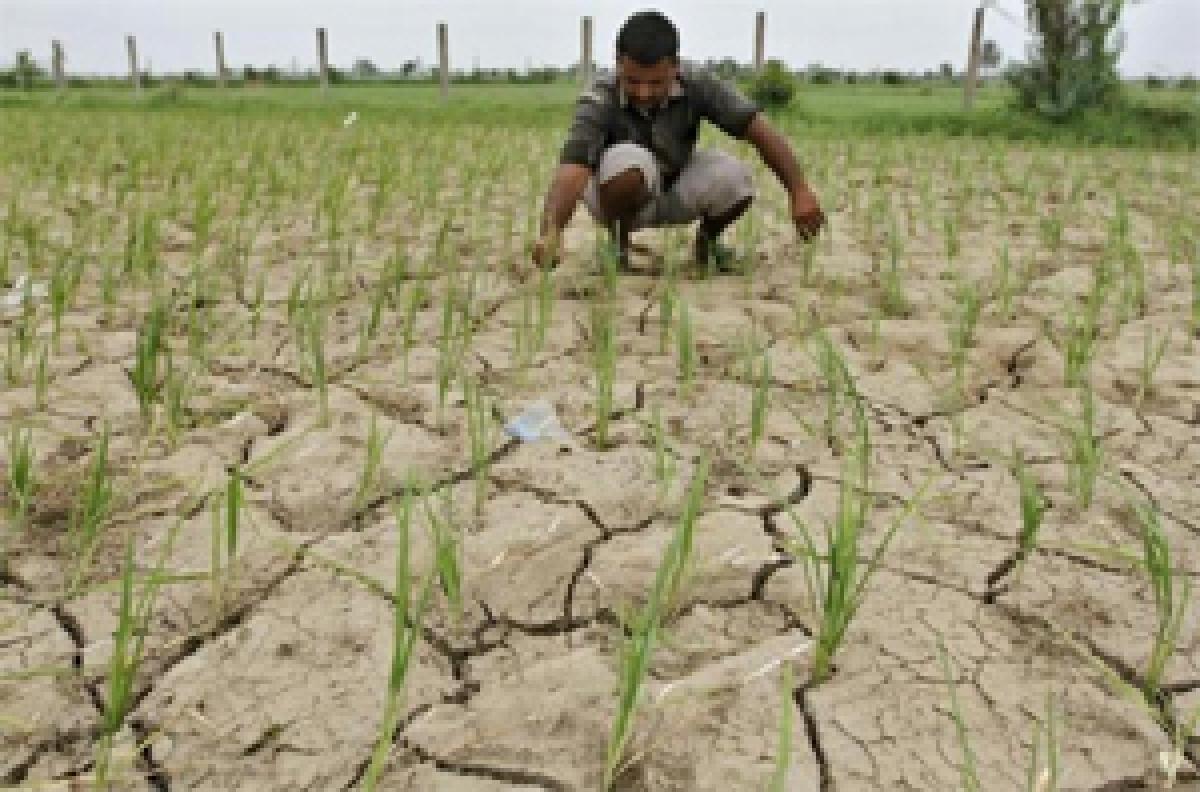Live
- Two Russian oil tankers with 29 on board damaged due to bad weather
- Telangana's Traditions Will Be Protected, Village by Village : BRS Leader MLC K. Kavitha
- Uganda to relocate 5,000 households from landslide-prone areas in eastern region
- Harish Rao Criticizes CM Revanth Reddy: "His Time is Over"
- Vijay Sethupathi Hails 'Vidudala-2' as a Theatrical Game-Changer
- Sahaj Yog: A Path to Inner Transformation and Harmony City takes giant strides
- Allu Arjun meets his uncle Nagababu at his residence
- J&K L-G felicitates Langar organisations & NGOs for contribution during Amarnath Yatra
- Hit by Covid, MP's Rakesh Mishra sees revival of his fortunes, courtesy PM SVANidhi scheme
- Trailblazing Yakshagana Artiste Leelavathi Baipaditthaya No More
Just In

Dry Spell Wilts Crops, Stokes Food Inflation Concerns. Farmers in India run the risk of planting too much, too fast in the current monsoon season as an unexpected dry spell starts to wilt crops across the country, raising fears of lower yields and surging food prices in a mostly impoverished nation.
.jpg) Mumbai: Farmers in India run the risk of planting too much, too fast in the current monsoon season as an unexpected dry spell starts to wilt crops across the country, raising fears of lower yields and surging food prices in a mostly impoverished nation. Food prices are a political hot potato in India, where more than a quarter of its population of 1.2 billion people live on a mere 74 cents or less per day. In fact, high food prices have already pushed the country's June consumer inflation to an eight-month high.
Mumbai: Farmers in India run the risk of planting too much, too fast in the current monsoon season as an unexpected dry spell starts to wilt crops across the country, raising fears of lower yields and surging food prices in a mostly impoverished nation. Food prices are a political hot potato in India, where more than a quarter of its population of 1.2 billion people live on a mere 74 cents or less per day. In fact, high food prices have already pushed the country's June consumer inflation to an eight-month high.
That is why the ongoing dryness in central, western and southern India - key producing regions for cotton, soybean, corn, sugarcane, pulses and rice - is a big cause for worry. Poor output of summer crops would further lift food prices, restricting the central bank from cutting lending rates, crucial to boosting Asia's third-biggest economy. "The outlook for inflation over the next few months depends squarely on monsoon rains for the remainder of the season," HSBC said this week. India's farm sector accounts for 15 per cent of its economy and given half its farmland lacks irrigation, the monsoons are crucial.
A heavy downpour early last month had lifted the rain surplus to 28 per cent, raising farmers' hopes of a good June-September monsoon season despite forecasts for the emergence of an El Nino weather pattern. But following the dry spell, rains are now 6 percent below normal, with the deficit as high as 52 percent in some regions, weather department data shows. "Sowing has nearly stopped due to the dry spell. Even sown crops are under severe stress," said Vikas Deshmukh, agriculture commissioner Maharashtra, India's second-biggest cotton and soybean producer as well as its top sugar producer.
Indian farmers had initially rushed to sow seeds after ample rains, bringing total planting levels to 44.5 million hectares by July 10, up 62 percent year on year. But the higher number does not give a correct picture as monsoon in 2014 was delayed and so was the sowing, said B.V. Mehta, executive director of the Solvent Extractors' Association. In 2013, when rains were ample, by this time farmers had planted on nearly 52 million hectares.
For millions of farmers in India, where three fifths of the population depend on agriculture for their livelihood, the fate of a single crop can be the difference between life and death. Earlier this year, dozens of debt-laden farmers committed suicide after damage from unseasonal rains, and poor summer-crop yields would exacerbate the pain for Prime Minister Narendra Modi's government that is struggling to address rural distress.
"I can sow crops once again when we get rains, but I don't have money to buy seeds," said Narayan Patil, a farmer from Sarve village of Jalgaon district, 400 km north-east to Mumbai. For Patil, and several others, the outlook is grim.
The official forecast remains that this year India could suffer its first drought since 2009 because of El Nino, which can lead to scorching weather across Asia. Maximum temperatures in central and southern India are currently up to 6 degree Celsius above normal, hurting crop growth, said Nitin Kalantri, a pulses dealer.
A drop in domestic output could lift overseas purchases of edible oils and pulses by India, the world's biggest importer of both, while limiting its rice and cotton exports. "Crop yields are likely to be lower than normal this year even if monsoon becomes active in next few days," said Vandana Bharti, Assistant Vice-President (Commodity) with SMC Global Securities Ltd.

© 2024 Hyderabad Media House Limited/The Hans India. All rights reserved. Powered by hocalwire.com







